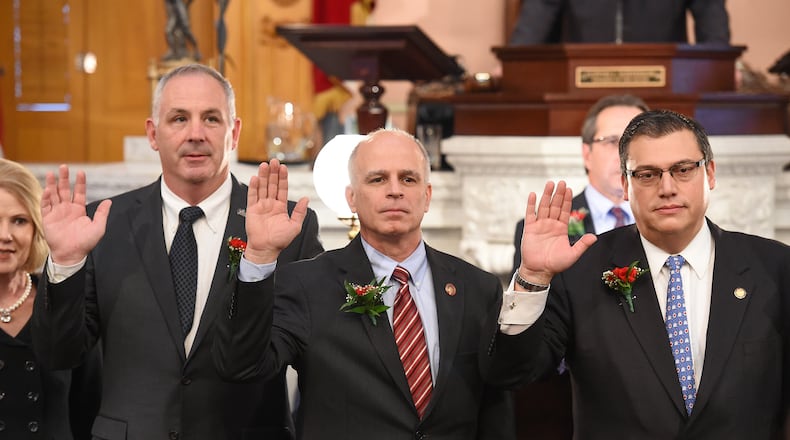Here’s a list of five issues affecting colleges that legislators in Ohio or Washington or both might address in the New Year:
1. The role of community colleges
Community colleges have seen an expanding role across the United States in recent years. In Ohio, some community colleges want to be able to offer four-year degrees, including Sinclair and Clark State.
Sinclair has already looked into possible bachelor’s degrees in aviation and unmanned aerial systems while Clark State officials want to offer one in manufacturing technology management.
Gov. John Kasich has thrown his support behind the idea too but community college officials said their expansion has been stalled at the Statehouse by four-year universities.
2. Campus rape and sexual assault
Rape continues to be an issue on college campuses across the country.
As of late October, four rapes had been reported on the University of Dayton campus and there was one report of a naked man entering a student residence.
UD has tried to take a proactive approach by implementing student prevention programs, but colleges may soon be expected to do more on their own.
Rep. Mark Meadows, a North Carolina Republican, has publicly recommended that President-Elect Donald Trump roll back U.S. Department of Education guidelines for how colleges should handle sexual assault. If the Trump administration follows the recommendation, states and individual colleges may bear more responsibility for figuring out how to best deal with sexual crimes on campus.
3. Undocumented college students
Trump has said he may rescind a U.S. policy that shields people who arrived illegally in the country as children from deportation. Hundreds of college presidents, including UD's Eric Spina, have come out in support of the policy, Deferred Action for Childhood Arrivals.
Legislators could listen to college presidents and pass laws that would permanently protect students who came to the U.S. illegally, or they could leave DACA’s fate to the new president.
4. State funding for Ohio colleges
Ohio contributes less to higher education than most other states. Throughout 2016, state and local officials called for that to change.
The state contributed around $5,078 per college student in 2015, close to $2,000 less than the national average, according to the Chronicle of Higher Education.
The shortfall in funding means colleges have had to rely more on tuition dollars. But, a looming decline in the number of Ohio high school grads would result in even fewer dollars unless colleges raise tuition or the state pitches in more money.
5. Student loan debt
Student loan debt has long been an issue and one that has impacted Dayton students. Area college students carry more loan debt than the state average.
Two-thirds of 2015 Ohio grads had loan debt and they left college with an average debt of $30,239. Students with debt at Wright State left with a few hundred dollars more on average, while indebted students at UD and Wittenberg graduated on average with around $4,000 to $5,000 more than the state average.
About the Author
